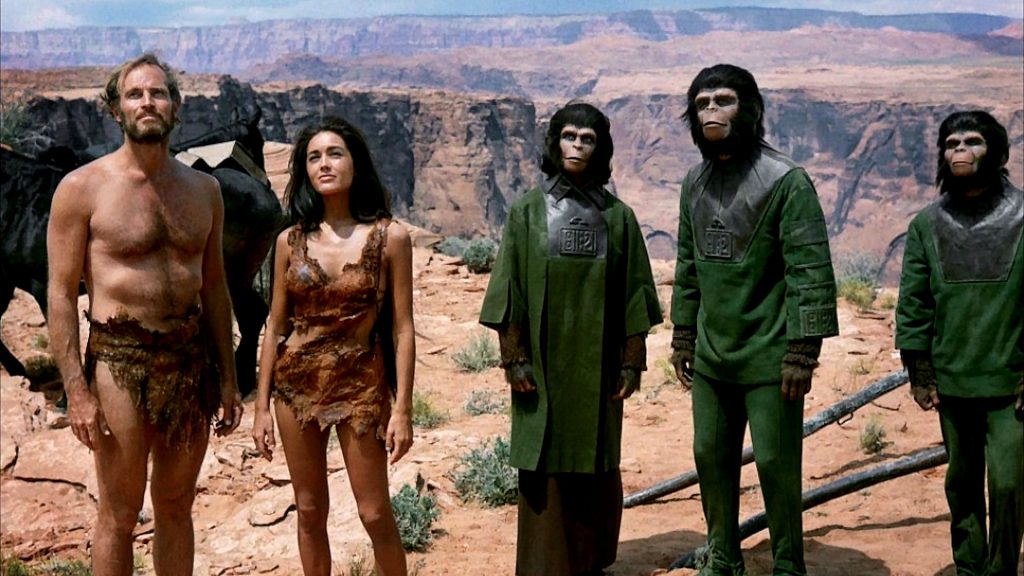The portrayal of animals in Planet of the Apes [1] is interesting as the roles of humans and animals are essentially reversed from what we are used to in everyday life. The apes are anthropomorphised – they walk and talk like humans, they ride horses, they are intelligent and literate, they have a justice system and a social hierarchy, with all members of the species having a role in society. Simultaneously, the humans are treated like animals. They are mute, imprisoned in cages and even experimented on by the apes.
Immediately, Schaffner is positioning the audience to find the treatment of the humans uncomfortable and to feel empathy for the human characters, particularly Taylor, who despite being similar to the ape characters in terms of intelligence is unable to engage with them due to a throat injury. By portraying humans as a submissive species dominated by the apes, Schaffner is highlighting the way that humans treat animals in real life. If we as an audience find it immoral for apes to lock humans in cages and treat them as inferior to them, why is it acceptable for us to treat animals like that on an everyday basis? Whilst the audience is subconsciously rooting for the human characters, it is the ape characters that express the most human qualities.
In a similar way, Planet of the Apes also asks the audience to consider how we treat one another within society. Humans can often overlook prejudice in society, but it is obvious when portrayed through the use of animals as it offers a fresh perspective. There is a racial hierarchy within the ape species, with the dark skinned apes shown as incredibly violent, working as prison guards and hunting the humans. Meanwhile the pale skinned orang-utans are in positions of authority, working as lawyers and doctors. Similarly, there are few female characters, with the most prominent female character, Zira, constantly undermined and overlooked by her male peers. This highlights how oblivious humans as a race can be to discrimination in society and how it is a problem, whilst it is worrying how relevant the themes of racism and sexism shown in the film are today, despite being released over forty years ago.
When Taylor ties up Dr Zaius on the beach, he says that he felt ‘humiliated’ when they did it to him. Cornelius says, “That was different, we thought you were inferior.” The representation of animals in this film highlights the idea of human arrogance and the way we treat animals, as well as other people in society. The use of apes and humans as a reversal of themselves in real life exaggerates these issues, to make a point about evolution and the fact that despite our position in evolution, we are still animals with primal instincts and aren’t that different from apes. The film focuses on an idea that the apes have eventually overtaken humans in evolution, and whilst this concept may seem exaggerated and unrealistic, Schaffner is making a point that we should treat all people in society with respect, as we never know when we might be in debt to them.
[1] Franklin J. Schaffner, Planet of the Apes (United States: 20th Century Fox, 1968).
